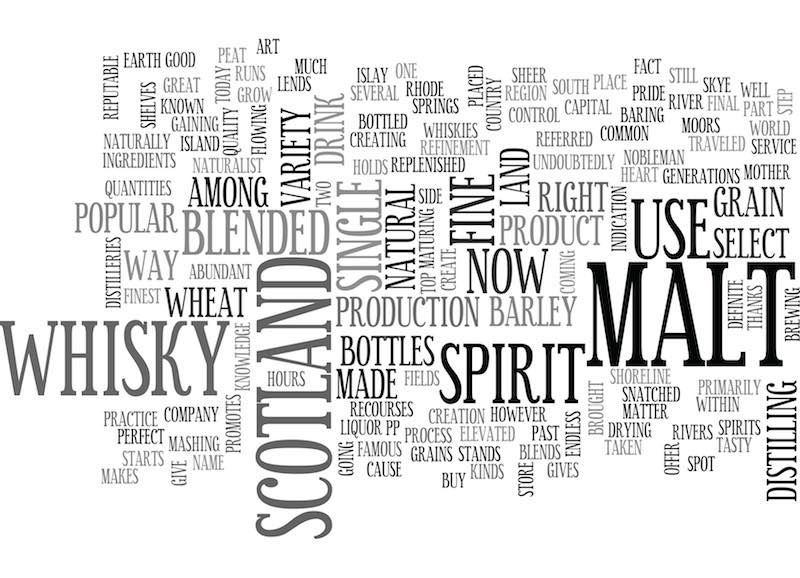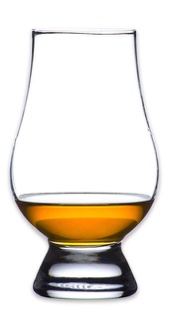10 Whisky Tips For Whisky Drinkers

There are so many things about whisky (or whiskey) that we can learn. The information is so vast that it may not be possible for a person to learn everything in one lifetime. Nonetheless, there are little tips here and there which we can pick up quickly from others who walked the path before us.
Recently, we found a book written by Andrew Langley – The Little Book of Whisky Tips – hidden on our bookshelf. It is apparent that we have forgotten about this little gem! On further inspection, we discovered that there are some helpful tips in there for whisky lovers everywhere, especially those who are just starting out on this fantastic journey.
Here are ten tips which we think you ought to know.
Drink whisky from a “tulip-shaped” glass
You are all set to appreciate whisky if you recognise what a Glencairn glass is. If you do not know how it looks, here’s a picture of the glass.
Bars use these glasses to serve whisky neat. The narrow top of the glass concentrates the aroma to help you get the best and fullest nose. The shape of the glass is also useful in encouraging you to sniff and sip. Hence, you are less inclined to slurp everything at one go.
Drink whisky in your way
As we have mentioned in a previous post, there is no right or wrong way to drink whisky. The important part of drinking whisky is to appreciate and enjoy the dram. If you want to know the top five favourite ways to drink whisky, check out our previous post here.
Drink a good quality single malt at room temperature
A good quality single malt may be debatable, but the idea is to drink one at room temperature instead of chilling it. The higher temperature helps to release the volatile oils and other aromas to give you a fuller nose when you sniff it using a Glencairn glass.
Use a lighter whisky for cocktails
If you are a fan of whisky cocktails and love to make your own, remember to use lighter whiskies as your base. The reason is simple – heavy malts tend to dominate the taste of the cocktail, making it singular and tasting too much like a regular whisky. The best whiskies to use for cocktails are Canadians, light Bourbons or British blend with plenty of grains.
Water can affect the whisky
Most whisky drinkers use tap water or distilled water when they want to add water to their whisky. While it is alright to do that, the whisky may change because of the interaction with chlorine in the water. You can use a bottle of still spring water to help you capture the aromas and flavours more quickly. Of course, the best kind of water to use is the water collected near the distillery itself, but that is too difficult to achieve for most whisky drinkers.
Store your whiskies in the correct way
If you are building a whisky empire in your house, be sure to store your bottles away from direct sunlight as that can affect both the colour of the whisky and the label. They should also be kept in a cool, dry and stable place. Whisky bottles can be stored upright, but take the time to turn the bottles sideways every three to six months to keep the cork moist.
Whisky can last forever
Whiskies do not spoil so quickly, as long as it is kept sealed in an unopened bottle. They do not age once they are bottled, and hence, the liquor goes into suspension mode. However, once you open the bottle, the liquid inside is affected by oxidation and may change its characteristics over time.
Read the label on the whisky bottle
There are many counterfeit whiskies on the market now. Therefore, one of the precautions that you can take is to read the label on the bottle carefully. If you see something named as “Scottish Whiskey”, it is likely to be a fake. Besides the obvious, check for spelling errors, or omitted information. Some telling signs are the omission of whether the whisky is a blended, a malt whisky or a single malt.
Most single malts have an age statement
All single malts used to have an age statement until recently. With the challenge of time and the lack of older single malts, distilleries have taken the market by surprise with non-age-statement single malt whiskies. Most single malts, however, still have an age statement. They will either state it as a 12 or 18 years old whisky or in some distilleries, the date of distillation and date of bottling. The age of the whisky is the difference between the two.
New-make whisky is colourless
All new-make whisky distilled from the stills are colourless. The colour comes from either the casks that they matured in or in the addition of sugar caramel. The adding of colour is permitted, but it is not a widespread practice as seasoned whisky drinkers are not keen on added colouring.
We hope these tips are helpful. If you have any questions, feel free to chat us up, and we will answer your questions to the best of our knowledge. As we always say, there is always something new to learn about whisky!



